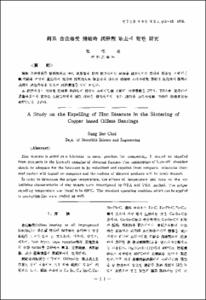Conrad 後期作品에 나타난 愛情觀
- Alternative Title
- The Idea of Love in Conrad's Later Works
- Abstract
- 本 論文은 Conrad의 後期長篇小說 Chance(1913), Victory(1915) The Arrow of Gold(1917)에 타나난 Conrad의 愛情觀을 밝혀 본 것이다. Conrad의 後期 主要作品에서 여 주인공에 대한 태도에 따라 기사도적이고, 理想的이며, 性的 欲求가 나타나지 않는 주인공과, 所有欲이 강하고, 육체적이며, 충동적인, 그리고 自滅로 향하는 질투를 同伴하고 있는 惡人의 두 人物類型으로 나눌 수가 있다. 여기서 主人公은 Conrad의 道德的, 理想的인 애정태도를, 惡人은 Conrad 自身의 內面的 愛情欲求를 나타내는 것이다.
主人公과 惡人이 갖는 공통점은 그들의 비극적 결말과 애정의 不協和이다. 그것은 곧 Conrad의 愛情觀이 否定的이라는 걸 의미하며, 그 根底에는 悲觀的인 Conrad의 人間觀이 깔려 있다.
결론적으로 Conrad은 후기작품에서 愛情小說을 통해, 前期에서와 마찬가지로 人間性의 秘密을 밝혀내려고 노력한 것이지, 人氣와 時流에만 편승해서 작품을 쓴 것은 아니다.
This paper is to disclose Conrad's conception on love by scrutinizing the attitudes of hero and villain to heroine in his later full length novels, Chance(1913), Victory(1915), and The Arrow of Gold, where women have prominent roles.
Major characters in Conrad's later works can be divided into two contrasting categories in their way of approaching woman. One is the hero who is chivalrous, whose love is platonic, ideal and sexless. The other is the villain who is possessive, that is, physical, impulsive, sexual and egoistic, having extreme jealousy which leads him to self-destruction. This means that conrad shows his attitude to love ambivalently through heroic and villainous chracters. The fero reveals Conrad's moral or ideal attitude to love, and the villian, his internal desire for love.
What the hero and the villain share in the stories are their tragic ends and inability to harmonize themselves with their lovers. So we are led to find Conrad's negative idea of love which is backed up by his pessimistic idea of human realtions.
Conclusively, Conrad tried to study and reveal the enigma of human nature, that is, heart of darkness through love stoies in the later works.
This paper is to disclose Conrad's conception on love by scrutinizing the attitudes of hero and villain to heroine in his later full length novels, Chance(1913), Victory(1915), and The Arrow of Gold, where women have prominent roles.
Major characters in Conrad's later works can be divided into two contrasting categories in their way of approaching woman. One is the hero who is chivalrous, whose love is platonic, ideal and sexless. The other is the villain who is possessive, that is, physical, impulsive, sexual and egoistic, having extreme jealousy which leads him to self-destruction. This means that conrad shows his attitude to love ambivalently through heroic and villainous chracters. The fero reveals Conrad's moral or ideal attitude to love, and the villian, his internal desire for love.
What the hero and the villain share in the stories are their tragic ends and inability to harmonize themselves with their lovers. So we are led to find Conrad's negative idea of love which is backed up by his pessimistic idea of human realtions.
Conclusively, Conrad tried to study and reveal the enigma of human nature, that is, heart of darkness through love stoies in the later works.
- Issued Date
- 1980
- Type
- Research Laboratory
- Alternative Author(s)
- Bae, Jong Un
- Publisher
- 연구논문집
- Language
- kor
- Rights
- 울산대학교 저작물은 저작권에 의해 보호받습니다.
- Citation Volume
- 11
- Citation Number
- 2
- Citation Start Page
- 359
- Citation End Page
- 368
- Appears in Collections:
- Research Laboratory > University of Ulsan Report
- 파일 목록
-
-
Download
 000002024070.pdf
기타 데이터 / 219.62 kB / Adobe PDF
000002024070.pdf
기타 데이터 / 219.62 kB / Adobe PDF
-
Items in Repository are protected by copyright, with all rights reserved, unless otherwise indicated.